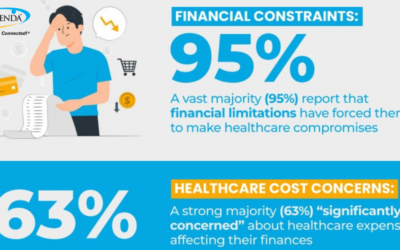“Tele-technology” has focused heavily on medical and biometric applications. Virtual doctor visits and remote monitoring of glucose, blood pressure, weight and oxygen have been front and center in the effort to increase access to medical care and better manage chronic conditions for patients. Readmission penalties, publicly reported quality data, bundled payments, accountable care organizations and medical homes are among the drivers that are compelling insurers and medical providers to turn to remote technology to support them in the post-Affordable Care Act era. However, little to no attention is being paid to the social health of the people they serve.
We are accustomed to believe and accept medical conditions like diabetes, cancer and heart failure impair our lives and eventually will kill us. No doubt they do and will. But, there are social and psychological factors that act as powerful, stealthy killers, especially as we get older. A number of studies within the past year provide the evidence for what most of us sensed was the case.
Last July, researchers at the University of San Francisco reported in the Archives of Internal Medicine that, among participants who were over 60 years old, loneliness was a predictor of functional decline and a 45 percent higher risk of dying over the next six years.
Meanwhile, a recent study in the Proceedings of the National Academy of Sciences performed by researchers at University College London reports that social isolation all by itself is associated with a greater risk of dying in older adults. After adjusting for pre-existing illnesses, researchers found that feelings of loneliness were not associated with increased mortality.
According to research in the Archives of Internal Medicine, lonely people who are 60 years old and older tend to have shorter lives than their counterparts who are close to family and friends. Another study showed that people who live alone and suffered from heart disease were 25 percent more likely to die from the illness.
So what’s the difference between being socially isolated and being lonely? Social isolation refers to a complete or near-complete lack of contact with others. Some may prefer this situation, but most of us don’t. Loneliness is the distress resulting from the gap between desired and perceived social relationships. Does this distinction really matter later in life? Probably not. It turns out both are common causes of distress, suffering and impaired quality of life in older persons.
As part of a research effort, 1,604 participants in the Health and Retirement Study, Carla Perissinotto, M.D., M.H.S., of the University of California, San Francisco, and colleagues examined the relationship between loneliness and the risk of functional decline and death in older individuals.
The participants (average age 71) were asked if they felt left out, isolated or that they lacked companionship. Of the participants, 43.2 percent reported feeling lonely, which was defined as experiencing one of the three feelings at least some of the time, according to the study results.
Loneliness was associated with an increased risk of death over the six-year follow-up period (22.8 percent vs. 14.2 percent), the results indicate. Loneliness was also associated with functional regression, including participants being more likely to experience decline in activities of daily living (24.8 percent vs. 12.5 percent), develop difficulties with upper extremity tasks (41.5 percent vs. 28.3 percent) and difficulty in stair climbing (40.8 percent vs. 27.9 percent).
“Loneliness is a common source of suffering in older persons. We demonstrated that it is also a risk factor for poor health outcomes including death and multiple measures of functional decline,” the authors wrote in the report.
The authors conclude their study could have important public health implications.
Richard Della Penna, MD, is Independa’s Chief Medical Officer.




